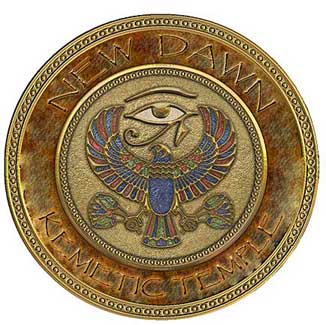|
|
|


~Mark Andrews~
Mention the West Bank at Luxor (ancient Thebes) and most people who have any knowledge of ancient Egypt may think of the tombs in the Valley of the Kings, the Ramesseum and the Temple of Hatshepsut, as well as a few other monuments. But this vast necropolis is almost unimaginatively complex, and beyond the many thousands of tombs, obscure temples and chapels ruins dot this landscape. In this short series of articles, we will examine "the other temples" of the West Bank. It should be noted that the reason most of these temples are fairly unknown is that nothing much physically remains of them for the most part.
This temple is often mentioned in conjunction with Amenhotep I's principle queen, Ahmose Nefertari, who apparently had her own cult worship at this temple. Though this king's tomb has yet to be found, he and his queen's mortuary temple was discovered on the edge of the floodplain just to the south of Dra Abu el-Naga. This possibly made him the first king to locate his mortuary temple in an area other than that of his tomb, or at least the first ruler of the New Kingdom to do so. There have been a number of blocks recovered from this temple, many of which depict the king's Sed-festival. Other recovered items include various statues and stele fragments, but as usual with these temples, virtually nothing else remains.
A temple commissioned by Amenhotep II lies just ot the north of the site on which the Ramesseum would later be built. Though little remains of this temple due to the plunder of the temple's stone at an early date, we know that it was probably small considering the long reign of this king. It had a court bordered on all four sides by a columned portico. Petrie, in his investigation of the temple, discovered foundation plaques.
Occasionally, a high official would gain such favor with his ruler that he might be allowed to build his own temple. Such was the case with Nebwenenef, who was a high priest of Onuris and Hathor at Dendera. He achieved the office of first prophet of Amun in only the first year of Ramesses II's rule, who granted him the unusual opportunity to build his own mortuary temple on the West Bank of ancient Thebes. Nebwenenef's small facility was built beneath the slope of Dra Abu el-Naga, very near the temple of Ramesses II's father, Seti I. Within this temple was found two broken colossi of Ramesses II, lying at the entrance to the court, though the rest of the temple is now destroyed.
The mortuary temple of Ramesses IV was constructed at the entrance to the bay of Deir el-Bahri, just north of Hatshepsut's famous Temple. A number of Egyptologists investigated the ruins, including Carter and Spiegelberg, but very little was discovered other than foundation deposits, along with a few inscribed sandstone blocks. This structure is now also completely destroyed.
Ramesses IV at first decided to build a large mortuary temple just to the south of his Colonnaded temple. However, after deciding to build a little to the north, he abandoned this project, but additional work may have been performed on this temple by Ramesses V and VI. Nevertheless, it appears that this temple remained unfinished. Archaeological investigations of the site unearthed foundation deposits, and many re-used blocks from various earlier temples including those of Tuthmosis II, Amenhotep II, Hatshepsut, Ramesses II, Merenptah and Ramesses III. And again, as with most temples in this area, virtually no remains are to be found of the temple today.
Situated between the temples of Tuthmosis III and the Ramesseum is the monument built by the relatively unknown 19th Dynasty King, Siptah. Though Petrie examined this site, as he did most all of the minor temples in the area, virtually nothing of importance was found other than foundation deposits of Siptah and chancellor Bay. While the function of this temple seems to be unexplained, it should be noted that Siptah and his queen, Tawosret (Tausert) apparently also built another temple on the west bank. It is located about half way between the temples of Tuthmosis IV and Merenptah. Hardly anything is know of this second temple, and the only items discovered in its ruins were jar fragments and small stone and faience plaques.
The name for this temple was derived from a pale limestone bust of Merit-Amun, who was both the oldest daughter and wife of Ramesses II, that was discovered at the site. It depicts her as a "Sistrum-player of Mut" and "Dancer of Horus", but she also held the titles of "Priestess of Het-Hert); Songstress of Atum; and Ritual in addition to being "the One Who Fills the Forecourt with the Scent of Her Fragrance; Superior of the Harem of Amun-Ra; the Eldest Daughter of the King and Nefertari, with the Splendid Face; Magnificent in the Palace; the Beloved of the Lord of the Two lands; She Who Stands by Her Master like Sothis is Beside Orion; and One is Satisfied with What is Said When She Opens Her Mouth to the Lord of the Two Lands" This small chapel is located just west of the Temple of Amenhotep II, not far from the Ramesseum.
In a recent discovery made at the site, four amazing status, dating to the Middle Kingdom, were discovered. Unfortunately all of them have had their names defaced, but it is believed they were set up in the shrine of one of the nearby tombs.